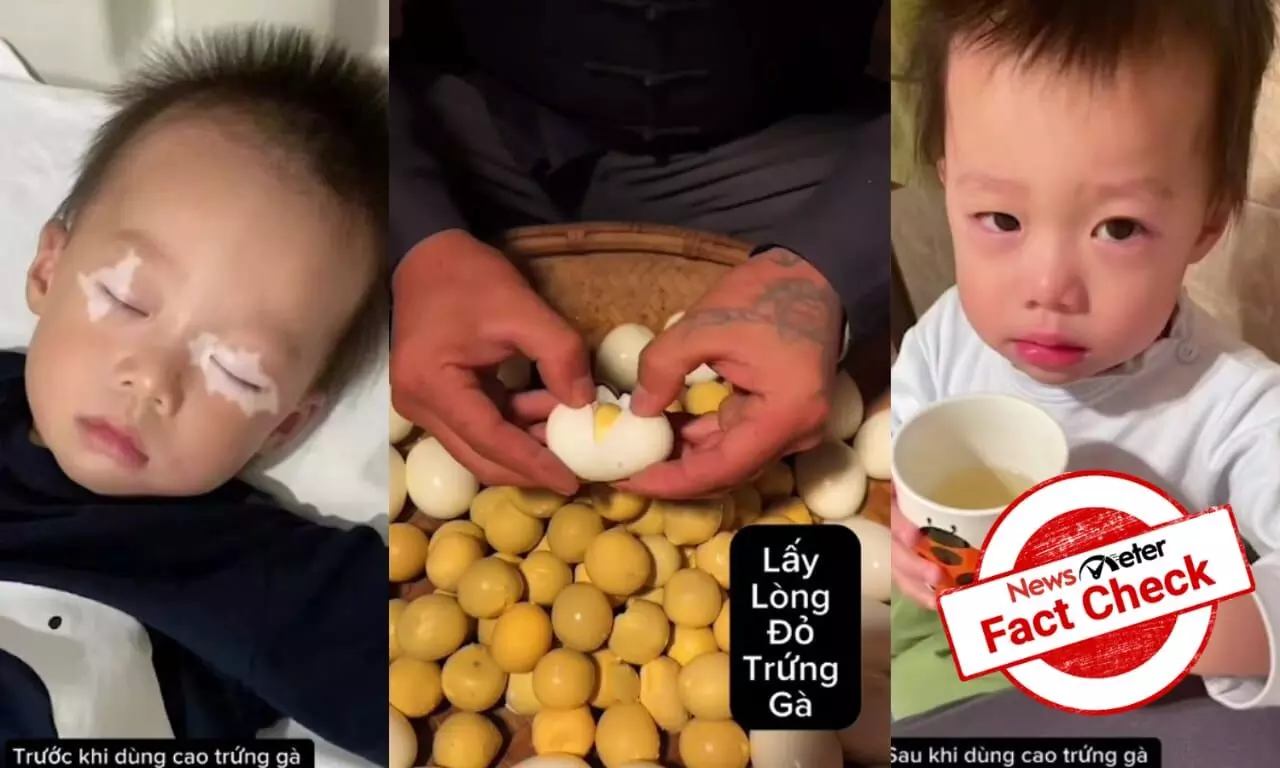Fact Check: Can oil extracted from egg yolks treat vitiligo?
Vitiligo is an autoimmune disease that cannot be cured, even if it can be managed.
By Sunanda Naik
Hyderabad: A video showing the preparation of a ‘miraculous’ homemade oil for treating the skin condition vitiligo is being shared on social media.
The video is being shared with the caption, ‘Treatment by Egg.’ In the video, it is claimed that the topical application of the oil extracted from egg yolks can treat vitiligo. The video has garnered 6,34,783 likes at the time of writing this article.
Fact Check
NewsMeter found that the claim is false as vitiligo is an autoimmune disease that cannot be cured, even if it can be managed.

We contacted Dr N Bhavana, a consultant dermatologist at Care Hospitals for an expert opinion on the same.
According to Dr Bhavana, there are a few lotions, called decapeptides, that can be applied before exposure to the sun that help induce pigmentation. “However, there is no natural remedy for vitiligo as of now,” the doctor said.
She further added that egg yolk doesn’t contain any pigment-generating compounds and should be consumed orally for its protein benefits.
The US Food and Drugs Administration (FDA) has recently approved a topical ointment named Opzelura (ruxolitinib) cream for managing vitiligo. However, there are a host of conditions to be considered before its application. Here are some of the points that need to be considered.
- The FDA has approved Opzelura (ruxolitinib) cream for the treatment of nonsegmental vitiligo.
- Must only be applied in adult and pediatric patients 12 years of age and older.
- It is currently approved for the topical short-term and non-continuous chronic treatment of mild to moderate atopic dermatitis in non-immunocompromised patients 12 years of age and older.
- Satisfactory patient response may require treatment with Opzelura for more than 24 weeks.
- At the end of the clinical trials, 30 per cent of Opzelura patients had at least 75 per cent improvement in the facial Vitiligo Area Scoring Index, compared with 10 per cent of placebo patients. Which means, the ointments still have loopholes.
What is Vitiligo?
Mayo Clinic describes vitiligo as a disease that causes loss of skin colour in patches. The discolored areas usually get bigger with time. The condition can affect the skin on any part of the body. It can also affect the hair and the inside of the mouth. Normally, the colour of hair and skin is determined by melanin. Vitiligo occurs when cells that produce melanin die or stop functioning.
There are a few types of vitiligo such as:
- Localised vitiligo is when you develop a few spots or patches that appear in one or a few places on your body.
- Generalised vitiligo when vitiligo causes scattered patches of colour loss on different areas of the body.
- Segmental vitiligo is another type of vitiligo. People with this type tend to see rapid colour loss on one side of the body.
- Non-segmental vitiligo, tends to spread slowly with new patches developing off and on throughout a person’s life.
- Mixed-type vitiligo is a rare type of vitiligo. People with this type develop both segmental vitiligo and colour loss beyond the area with segmental vitiligo.
According to the American Academy of Dermatology Association, there are three ways in which a dermatologist can help you manage vitiligo such as restoring the lost colour, stopping the patches or spots from getting bigger and preventing new spots. Vitiligo is an autoimmune disease which means that your immune system is attacking healthy cells in the body that give pigment to your skin.
As of now, no treatment cures vitiligo completely. According to your diagnosis, a dermatologist can prescribe topical creams, light therapy, medication, surgery and a diet or supplements that may help you manage the condition.
Hence, we conclude that there is no scientific evidence to prove that egg yolk oil helps treat vitiligo.